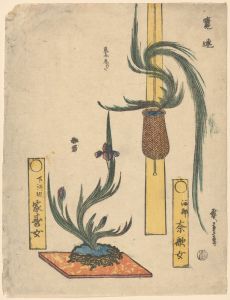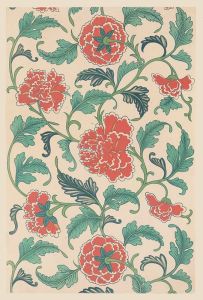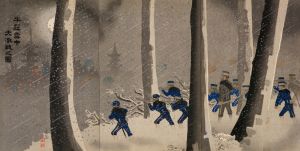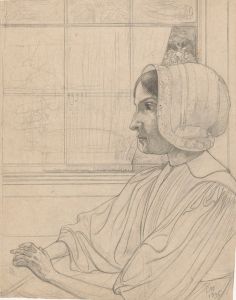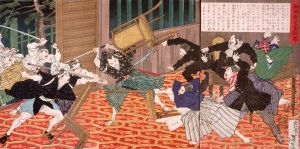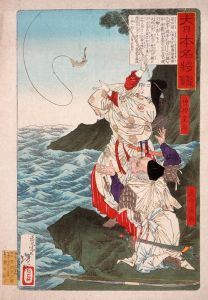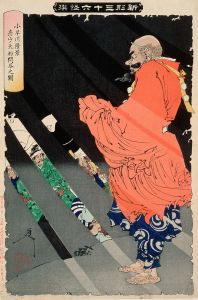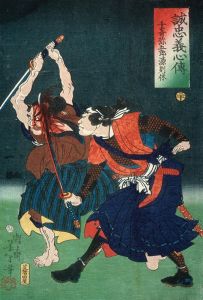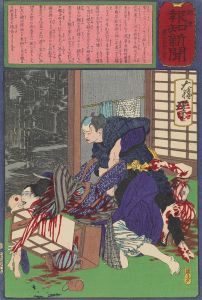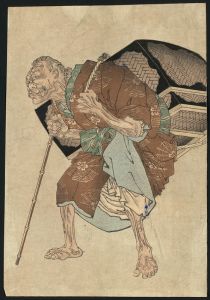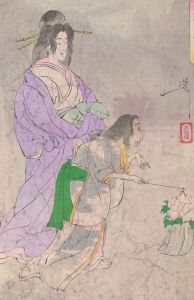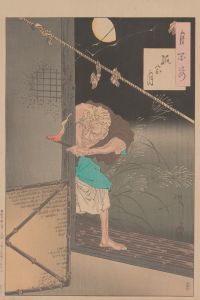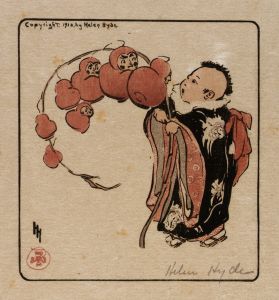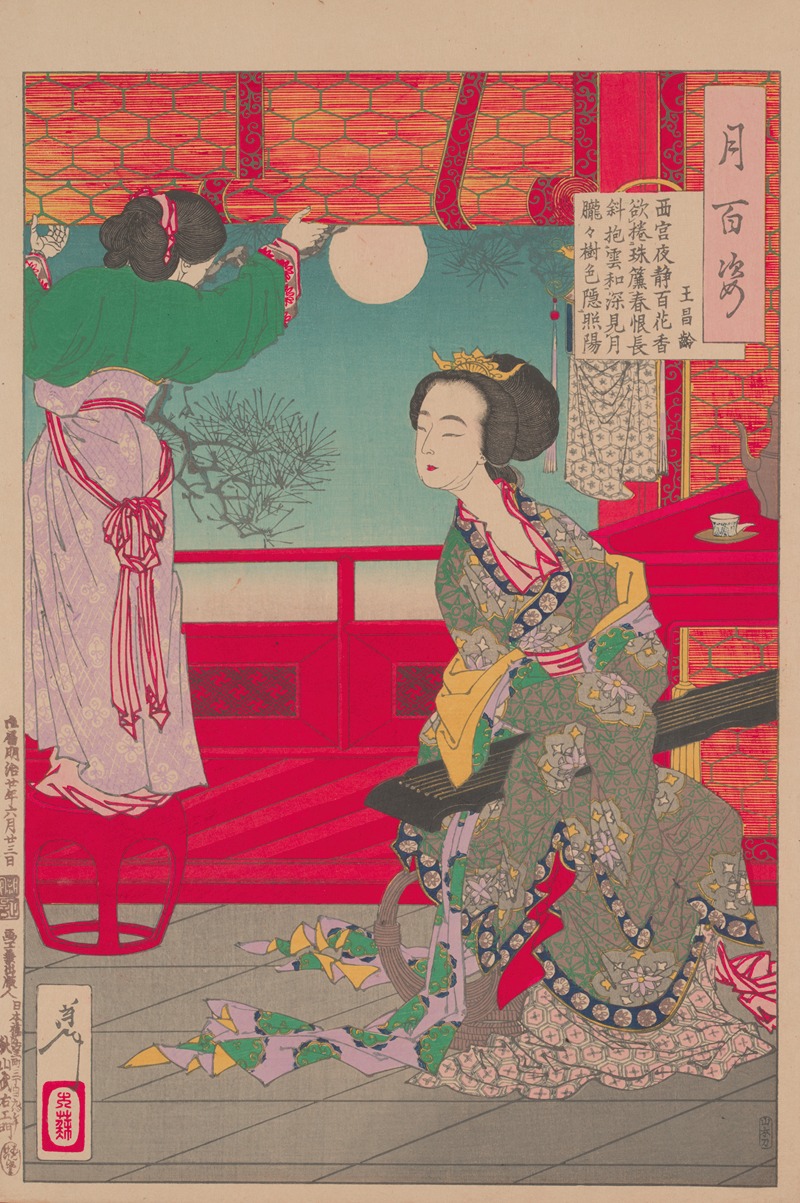
Chinese beauty holding a stringed instrument
A hand-painted replica of Tsukioka Yoshitoshi’s masterpiece Chinese beauty holding a stringed instrument, meticulously crafted by professional artists to capture the true essence of the original. Each piece is created with museum-quality canvas and rare mineral pigments, carefully painted by experienced artists with delicate brushstrokes and rich, layered colors to perfectly recreate the texture of the original artwork. Unlike machine-printed reproductions, this hand-painted version brings the painting to life, infused with the artist’s emotions and skill in every stroke. Whether for personal collection or home decoration, it instantly elevates the artistic atmosphere of any space.
Tsukioka Yoshitoshi (1839–1892) was a prominent Japanese ukiyo-e artist, celebrated for his innovative and dramatic woodblock prints during the late Edo and early Meiji periods. He is often regarded as the last great master of the ukiyo-e tradition. Among his extensive body of work, one notable piece is Chinese Beauty Holding a Stringed Instrument. This artwork exemplifies Yoshitoshi's ability to blend traditional Japanese woodblock printing techniques with influences from Chinese culture and aesthetics.
The print depicts a Chinese woman holding a stringed instrument, likely a pipa, a traditional Chinese lute with a pear-shaped body. The figure is adorned in elegant clothing, with intricate patterns and flowing lines that highlight Yoshitoshi's attention to detail and mastery of design. The composition reflects Yoshitoshi's interest in portraying foreign themes and subjects, which became increasingly popular in Japan during the Meiji era as the country opened up to international influences. The woman's serene expression and graceful posture convey a sense of refinement and cultural sophistication, hallmarks of Yoshitoshi's portraiture.
Yoshitoshi's work often explored themes of beauty, history, and folklore, and this piece fits within his broader oeuvre of depicting women in various cultural and historical contexts. While the title suggests a Chinese influence, the artwork remains rooted in the ukiyo-e tradition, characterized by bold lines, vibrant colors, and a focus on the interplay between figure and background. The print may have been part of a larger series or a standalone work, but specific details about its publication date or series context are not readily available.
During the Meiji period, there was a growing fascination with Chinese and Western art and culture in Japan, and Yoshitoshi's work reflects this trend. His ability to incorporate foreign elements while maintaining the essence of Japanese artistic traditions made his prints distinctive and appealing to contemporary audiences. This particular piece demonstrates his skill in merging cultural motifs and his dedication to capturing the beauty and elegance of his subjects.
As with many of Yoshitoshi's works, Chinese Beauty Holding a Stringed Instrument showcases his technical expertise and artistic vision, contributing to his enduring legacy as one of Japan's most influential ukiyo-e artists.





